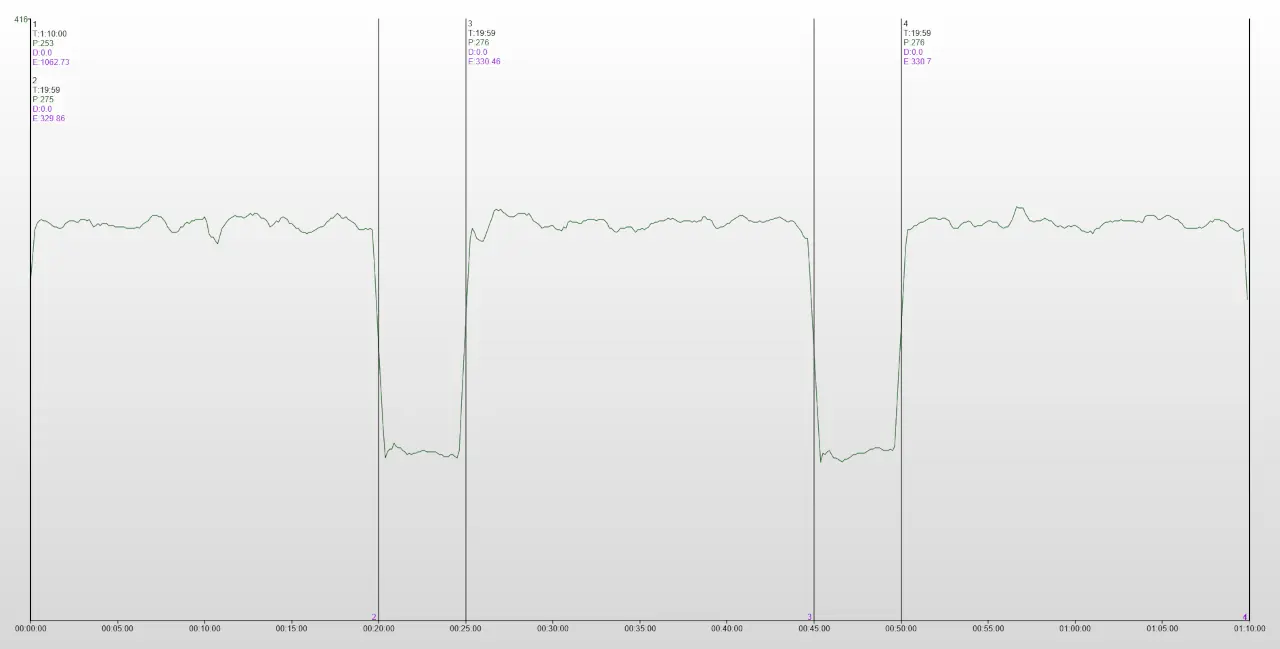Sweet spot training (SST) is an effective way to improve your FTP (functional threshold power). The power range in which you get the maximum impovements with a minimum of time is called sweet spot. For this reason sweet spot training is particularly good for time-crunched cyclists but also for professional athletes to improve FTP.
Sweet spot training is done between 88 % and 93 % of your own FTP. This is exactly between L3 and L4 (training levels adapted from Andrew Coggan). The first thing before doing a sweet spot training is to determine your own individual FTP. Determing the FTP can be done by a FTP test.
Sweet spot training is very often done in the form of intervals. After some time of hard work a time of recovery follows. This cycle is done several times. For example the time of hard work (called as work interval - WI) lasts 20 min and the time of recovery (called as rest interval - RI) lasts 5 min. I did such a training on 02.04.2015 which can be seen below.

I did the three intervals with 20 min WI and 5 min RI with an average power in the WI of 275.5 W.
The recovery (RI) should be done by easy pedaling within L1 (less than 55 % of your FTP).
The total time spent in WI should approximately be around 40 min to 60 min. Sometimes longer durations are useful. Due to a very high physical stress more than 60 min with this intensity can hardly be done (if the intensity was chosen correctly which requires a correct FTP value). Usually the RI (active recovery) lasts for one quater of the WI duration.
Other examples for sweet spot intervals are 4 to 6 times 10 min with 2.5 min of recovery or 3 to 4 times with 16 min and 4 min recovery.

I increased the power in the last interval because I had the feeling to go too easy (the average power in the WI was 301.3 W). One reason for that is the changing FTP during time. When FTP increases the power at the sweet spot increases too.
| Count | Work duration | Rest duration |
|---|---|---|
| 2 - 3 | 20 min | 5 min |
| 3 - 4 | 16 min | 4 min |
| 4 - 6 | 10 min | 2.5 min |
Which WI duration you should choose depends on actual fitness level and goals. Occasionally sweet spot training is not done in form of intervals but steadily for up to an hour. This is not only a high physical stress but also a high psychical stress and therefore not recommended. Variation (steady training vs interval training) can have advantages because the body gets new stimuli to adapt. Changing the duration of WI and RI is also recommended to get new stimuli.
Depending on fitness level and training phase the freuqquency of sweet spot training varies. Due to the high physical and also psychical stress there should be an
easy training day between two sweet spot trainings. If you train for a stage race, you should probably do several sweet spot trainings consequtively. Active recovery
can then help to get back to full performance. You always need to keep in mind that you get stronger when you rest because the body adapts to stimuli from training.
Passive recovery (enough sleep) is also essential for a good performance.
For most athletes three sweet spot trainings per week are feasible.